HOW TO SPOT FAKE GOLD
REAL GOLD VERSUS FAKE GOLD - HOW TO TELL THE DIFFERENCE
This post contains affiliate links. If you use these links to buy something I may earn a commission. Thanks! As an Amazon Associate I also earn from qualifying purchases.
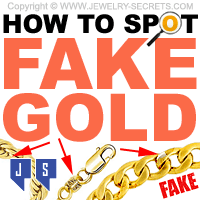
Real or fake?
Sure fake gold (usually yellow gold) may look like the real thing at first glance. But if you take a minute and gaze closer, you can normally tell pretty easily if it’s genuine or not.
Following are some quick tips and tricks to telling the real stuff from fake.
1) Gold Price:
Price is always a great indicator. If someone is trying to sell you a gold chain, and it’s really, really cheap; it’s not real. Gold is expensive and holds its weight in, well, gold.
If a rope chain that would normally cost you $1,500 is selling for $49… It’s fake!
No one is going to sell it cheaper than what it’s worth. Even selling the item at scrap metal value would bring you more greenbacks. So look at the item, then look at the price. Is it justifiable? Price is a dead giveaway.
2) Gold Size:
Let your eyes be the judge. Is the piece massive in size? Like a huge gold 30mm chain as seen in the music videos? If it’s that big and thick, chances are it’s not the real deal. Huge chains (many filled with cz’s all the way down) would be worth a fortune if real. So 9 times out of 10, they are not. They are hollow, gold plated, worth just a fraction of the price.
3) Gold Weight:
How does it feel? How heavy is the peice? Gold has a nice weight to it. A balanced consistency. So take the item in question in the palm of your hand and bounce it. Feel the weight. Does it feel light and airy (like a balloon), or does it fall with substance? Also, listen to the sound it makes. Usually fake chains sound more like tin. They clink together when they fall. Give it a bounce test. Does it float like a feather?
Now… It is important to note that an item could be hollow and could be real at the same time. Many manufacturers produce hollow (also called semi-hollow) chains that are real gold, but just a 1/4 of the weight. This is to reduce cost, of course (think gold hoop earrings). They are hollow inside, but still real. So weight isn’t always a positive, but it’s a good start. Hollowed items don’t wear very well. They usually dent easily, crush, or break. They aren’t very durable, and I wouldn’t advise them.
4) Gold Color:
The color of gold can be a good clue too. Is the item incredibly yellow? Gold plated pieces generally are over-yellow. Really bright. The plating is normally not even or smooth either. It’s bubbled up (like spray paint), missing in sections (leaving some parts yellow, some parts white). So always look closely around the links and inside the crevices for more detail.
Grab yourself a 10x jeweler’s loupe and scope the entire piece. Do you see tarnishing? Discoloration? Layers chipping or peeling off? Gold plated items are a shell that covers the outside surface. This shell wears off, rubs away, chips or pits. Look for uneven sections. White or black base metal beneath (sometimes leaving green or black stains on your neck or clothing). These are a big signal that the item is fake.
5) Gold Stamp:
Look for a karat stamp; 10k (also written as 417), 14k (585), 18k (750), 24k (999). If it’s stamped, it could be real. Fake items are generally not stamped at all, or they’ll say things like 925, GP (gold plated), or GF (gold filled).
But, here’s the thing, the karat stamp isn’t always accurate. For many times the chain could be fake, but the jump ring or the clasp is real (very misleading).
Meaning, if you go by just the stamp on the clasp (lobster, spring ring), you could get yourself ripped off. It’s important to actually test the chain or bracelet itself. That way there is no question as to the authenticity of the piece.
Compare the items:
If you really want to know if an item is fake or not, compare it with the real thing. Go to a jewelry store and find something similar. Check out the quality, the coloring, the price tag. It will tell you what a real item would look like, feel like, and sell for.
And lastly…
Test the Gold:
Pick up a gold acid tester kit and test the pieces with acid. It will tell you instantly if the article is real gold or fake. Sometimes you’ll have to scrape away a little area to test it properly, other times you’ll have to file away a section or chunk of the gold just to see what’s hidden inside; a layer, or whether it’s solid.
Get your acid testing kits here.
Those tester kits are exactly what jewelers would use.
So as you can see, there are many aids; the visual appearance, the hue, the smoothness or waviness of the gold, the weight, the thickness, the price, the stamps… they are a sure-fire way.
See some examples below:

And if you still don’t know…
Head into a local jewelry store. They can usually tell you within seconds.
Cheers! :)


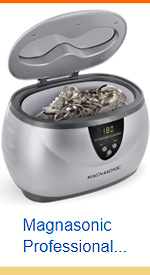

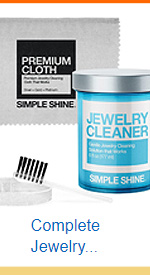
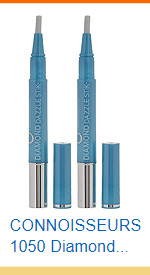
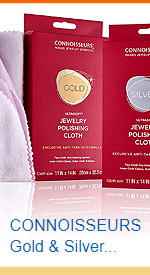
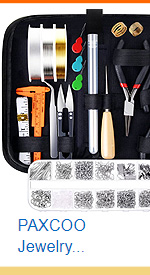
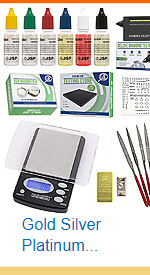
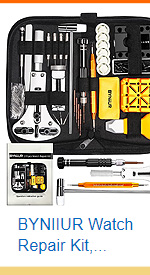
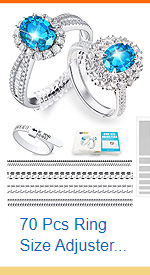
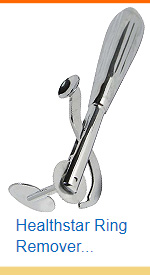
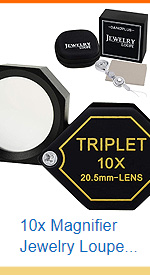
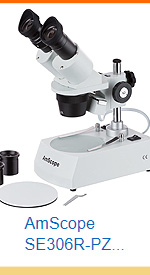




I bought a white gold diamond ring with 5 diamonds. It is stamped with a c in a circle with A/C? it
My bracelet has no any mark but it sinks in water, can it be rea
Hi I buy necklace in ongpin last day and I notice that beside of number 750 theres also a Chinese sign,but I as the seller if Saudi gold,they reply me yes 18 k Saudi gold,itsnt fake?!??what does Chinese sign stand for???
I have a panther head
18k ring 3/4 carrot diamonds with ruby eyes came from Arabia
And an 18 k necklace all stamped I know my ring is worth 8 grand and the necklace had appraised at 1200 so I did a test and went to a gold buying shop the man tested my ring with a magnet it did not stick, he asked if he could do a scratch test it left a gold streak but when he applied the acid to the streak it took a minute then disappeared He said that it was fake then I said well what about my necklace he did the same thing streak and all he said it was fake also ?
I keep these so called fakes in a vault and only wear them on occasion.
I was stereo typed I have long hair and tatts with a beard so in my mind I think that He ASSUMED Tthey were stolen ?
I have a waterfall cluster diamond ring marked TI GOLD KA DO YOU have any information on this piece ?
TG is on it nothing else it’s a very large gold chain necklaces big links